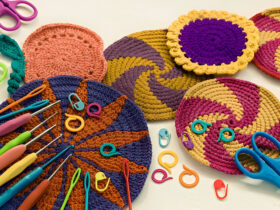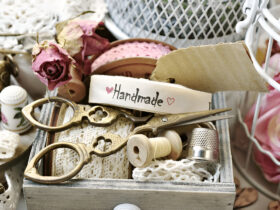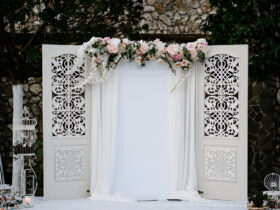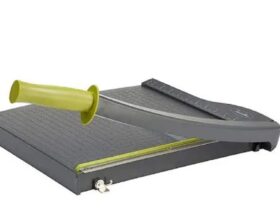Air dry clay is a great choice for fun crafts and creative projects. It’s easy to shape and doesn’t need baking. But after it dries, painting brings your creation to life. So, what’s the best paint for air dry clay? The top choice is acrylic paint. It sticks well, dries fast, and gives bright, bold colors. You can also use paint markers or permanent markers for details. Sealing the paint with Mod Podge helps protect your art. Whether you’re a beginner or expert, using the air dry clay painting techniques to paint your clay projects look amazing and last longer.
Why Use Air Dry Clay?

Air dry clay is a versatile sculpting material. You don’t need a kiln or oven. Just shape it, leave it in a cool, dry place, and let it harden on its own. That’s why it’s ideal for beginners and easy paint for DIY clay crafts.
Plus, working with clay helps improve fine motor skills. Children learn to roll, pinch, and shape clay while building problem-solving skills. They figure out how to keep their creations stable and connected.
Some children may not enjoy drawing or painting, but they love working with 3D materials like clay. It gives them a new way to express themselves and clay art paint ideas.
Types of Best Paint for Air Dry Clay Kids

Clay is a fun and creative material for children. It helps them explore shapes, textures, and artistic ideas. Whether at home, in school, or in art studios, kids can enjoy many types of clay. Let’s look at the Best Paint for Air Dry Clay for kids and how to paint air dry clay.
1. Air Dry Clay – A Top Pick

Best Paint for Air Dry Clay is one of the most popular types for Beginner paint for clay crafts. It has a soft texture, like real clay used in pottery studios. The best part? You don’t need a kiln or oven. Just let it sit in a cool, dry place, and it hardens on its own. This clay is easy to mold and teaches real sculpting techniques.
It’s also budget-friendly and Best way to color air dry clay medium projects. Plus, it’s non-toxic and safe for kids to use. Best paint for air dry clay works well for making decorations, gifts, and art projects. It’s perfect for beginners Air dry clay paint ideas and even experienced crafters who want quick, durable results without extra equipment.
2. Polymer Clay – Bright and Colorful

Polymer clay is another favorite, especially for older kids. It’s a synthetic clay made from resins, coloring agents, and polymers. Before using it, you must warm it in your hands to make it soft. Then, shape your design and bake it in a low-temperature oven. Be sure to bake in a well-ventilated space, as it gives off light fumes. You can find it in many colors, even metallics! Kids use it to make beads, jewelry, and fun miniatures.
3. Foam Clay / Model Magic – Light and Soft

Model Magic, made by Crayola, is a great clay for beginners painting tips for air dry clay. It’s soft, squishy, and comes in many bright colors. Younger children love it because it’s easy to shape and doesn’t make a mess. but, it doesn’t hold fine details as well as other clays. It’s best for simple and quick craft projects.
Foam clay dries quickly and feels very light when finished. You don’t need any tools—just your hands. This makes it perfect for group activities, classrooms, and creative play at home. While it’s not ideal for detailed sculpting, it offers a fun and safe start for kids learning how to work with clay.
4. Real Clay – For Kiln Use
If you’re lucky to have a pottery studio or a kiln at school, you might get to try real clay. This type is used for traditional pottery. It needs to be fired in a kiln at high heat to harden. While not as common at home, it gives the most durable results and teaches true ceramic skills.
5. Learning Without a Kiln
Even without a kiln, kids can still learn essential clay-building skills. Best paint for air dry clay and other store-bought options allow children to practice sculpting and attachment techniques. They can make animals, bowls, masks, and more. It’s a hands-on way to learn and express creativity. Plus, these clays dry naturally, so kids can see their work harden without waiting for a firing process. This makes clay art accessible at home and in classrooms. It encourages problem-solving and fine motor skills, helping children gain confidence while having fun.
Tools to Paint Air Dry Clay

Before painting, it’s important to have the right tools. The basic tools for best paint for air dry clay are simple and easy to find. These help shape, design, and add texture to your clay projects and also glossy paint for clay art.
Start with a toothpick. It’s great for making small details or drawing lines on your clay. Next, use a popsicle stick to smooth out surfaces or cut shapes. These basic tools give you control while working with best paint for air dry clay.
When it’s time to paint, a soft paintbrush is your best friend. Choose one with a fine tip for small areas and another wider brush for large parts. Always use clean brushes for the best results.
Another handy item is a ball of aluminum foil. Gently roll it over your clay to create fun textures and patterns. This simple trick adds depth to your design and makes your project stand out.
Attaching Best Paint for Air Dry Clay Pieces
Working with best paint for air dry clay is fun, but attaching parts the right way is key. Just like traditional clay, air dry clay needs Air dry clay art supplies. If not done properly, your attached parts may fall off after drying. So, how do you do it correctly?
Step 1: Score the Clay
Start by scoring the clay. This means making small hatch marks on the surfaces you want to join. You can use a toothpick, needle tool, or even a pin. These tiny lines help create grip between the two pieces of clay. Without scoring, the parts may not stay in place.
Step 2: Add Slip or Water
Next, add a little slip or water to the scored surface. Slip is a mix of clay and water used to bond parts together. However, with Crayola air dry clay, plain water often works just as well. Dip your finger or a small brush into water and lightly dab one of the scored areas. This creates a sticky bond when pressed together.
Step 3: Attach and Press
Now it’s time to attach the clay pieces. Gently press the scored and moistened areas together. For example, if you’re adding a handle to a mug, score both the handle and the mug where they meet. Add water to just one surface, then press them together. This forms a secure joint.
Step 4: Blend for Strength
Use a popsicle stick or modeling tool to blend the edges. This helps smooth the connection and makes it look like one piece. Blending also adds strength to the bond, making the clay less likely to break after drying. Take your time with this step for the best results.
Step 5: Smooth Small Areas
When working in small areas, your finger may be too large. Instead, use a slightly damp paintbrush. Gently smooth the surface where the clay pieces connect. This not only helps clean up the seam but also gives your project a polished finish.
Finishing Best Paint for Air Dry Clay
Just like traditional clay needs glazing, best paint for air dry clay also needs a good finish. Acrylic paint for air dry clay is the most common and beginner-friendly choice. It adds color and protects your project. You can fully customize the look using different painting tools.
Painting Before It Fully Dries
Here’s a cool tip! You can start painting Crayola air dry clay before it fully dries. This works because Crayola clay doesn’t shrink much, unlike other air dry clays. That means the paint won’t crack or flake as the piece dries. However, it’s still a good idea to wait at least two hours before painting. Let the surface set a bit so it doesn’t get damaged by your brush strokes.
Be Gentle with Wet Clay

If you decide to paint while the clay is still slightly wet, be extra gentle. Pressing too hard might bend or dent your sculpture. Use soft brushes and light strokes to avoid changing the shape. The longer you wait, the easier it is to paint safely without damaging your work.
Seal Your Painted Clay
Although air dry clay is more fragile than kiln-fired clay, acrylic paint adds a layer of strength. For extra protection, seal your painted project with Mod Podge or a clear acrylic sealer. This will keep your piece safe from moisture and make the colors last longer. Plus, it gives a nice glossy finish!
Use Any Clay and Join the Fun
Even if you don’t use Crayola air dry clay, you can still follow these tips. For polymer clay, remember it must be baked before painting. Foam clay may not give the same paint results, but it’s still a great material for crafting and learning. Whether you’re joining a class, live tutorial, or just having fun at home, painting air dry clay is a creative and satisfying experience.
Frequently Asked Questions
1. What kind of paint works best on air dry clay?
Answer: Acrylic paint is the best choice for air dry clay. It dries fast, sticks well, and comes in many colors.
2. Can I paint air dry clay before it dries completely?
Answer: Yes, you can paint Crayola air dry clay before it fully dries, but wait at least 2 hours. Be gentle to avoid bending soft parts.
3. Do I need to seal painted air dry clay?
Answer: Yes, sealing with Mod Podge or clear acrylic spray helps protect the paint and makes your project last longer.
4. Will acrylic paint crack on air dry clay?
Answer: No, acrylic paint won’t crack on Crayola air dry clay because it doesn’t shrink much while drying.
5. Can I use markers on air dry clay?
Answer: Yes, permanent markers and paint markers like Sharpie or Posca work well for adding fine details.
Conclusion
Painting air dry clay is a fun and creative way to finish your projects. Acrylic paint is the best choice because it is easy to use, dries fast, and gives bright, lasting colors. You can also use paint markers or permanent markers for small details. To protect your artwork, always seal it with Mod Podge or a clear spray sealer. Whether you’re a beginner or an experienced crafter, using the right paint will make your air dry clay creations look amazing and last longer.











Leave a Reply